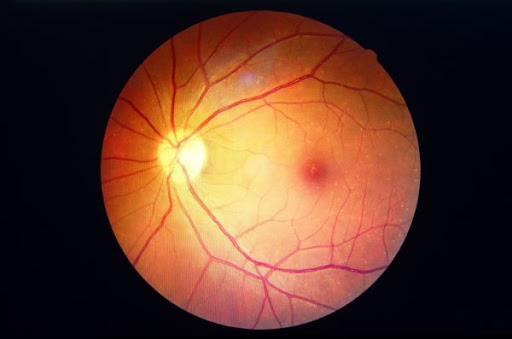Teleoptometry: Why Your Practice
Should Consider It
Highlights
- Teleoptometry can provide better continuity of care for patients, regardless of location.
- Providers can use teleoptometry to save their practice money and make patient visits more convenient.
- As more students graduate under mounds of student debt, these technology solutions make it more affordable to start practicing.
- Patients experience more convenient care that works for them, with access to better patient education and a caring relationship with their providers.
There is a reluctance among optometrists to embrace improving technology, especially when it comes to offering quality care to their patients. While you may think you have your patients’ best interests at heart, teleoptometry provides a growing number of benefits and could help you offer even better continuity of care and a better patient experience.
What Is Teleoptometry?
Teleoptometry is the use of technology to allow eye care professionals to provide virtual services to patients. This can include anything from providing advice and guidance on choosing the right eyewear, to conducting full eye examinations.
Medical practices that employ the use of teleoptometry do so by connecting with patients through a secure video conferencing system. This allows practitioners to interact with patients in real time, without having to be in the same room.
You can care for your patients in numerous ways using teleoptometry, including:
- Providing routine exams
- Diagnosing disease or infection
- Sending secure messages with photos or video clips
- Providing continued care on mobile devices
- Disbursing specialized information
- Facilitating discussion groups
The Value of Teleoptometry
There are plenty of ways teleoptometry provides value to the field. Benefits aren’t limited to one type of provider, and virtual visits can serve several important purposes, including but not limited to:
- Offering quality eye care to rural areas
- Helping entrepreneurs start their practice at a lower cost
- Providing eye care to those who don’t otherwise have access to it
- Providing improved diabetic vision compliance via digital teleretinal imaging
- Educating patients
Rural Optometry

Some of the most successful practices are in rural America. There are plenty of reasons for this, not the least of which is that they are often the only eye care provider in town. This gives them a monopoly on the market, but patients often have to travel long distances to see them and face longer wait times.
Rural practices can benefit from teleoptometry in several ways. Televisits allow them to reach more patients without having to see them in person. This can help reduce appointment wait times and make it easier for patients to get the care they need.
Teleoptometry can also help rural practices improve their bottom line by reducing overhead costs associated with things like travel and office space.
Starting a Practice
When you’re first starting out, every dollar counts. You need to be careful about how you spend your money and where you invest it. This is especially true when it comes to opening a new medical practice. The unfortunate reality is that students are well educated and ready to hit the ground running, but the costs of getting started often hold them back.
One of the biggest costs associated with starting a new practice is office space. You have to find a place to rent or lease, which can be expensive, especially in larger cities. Teleoptometry can help you save money on office space by allowing you to conduct consultations and examinations remotely. This can help you keep your overhead costs down, which can keep more money in your pocket.
Access to Care
Teleoptometry allows eye care professionals to provide services to patients who might not otherwise have access to them.
There are many people who don’t have access to quality eye care, and the problem isn’t isolated to rural areas. It’s prevalent in larger cities as well, where traffic makes it harder to get around and long wait times at the doctor’s office are common.
Teleoptometry can also help improve access to care for people with disabilities. This includes those who are blind or have low vision as well as people who are wheelchair bound and have difficulties getting around.
By providing services remotely, eye care professionals can make it easier for these individuals to get the care they need.
Improve Compliance With Diabetic Screening

As an optometrist, you know that diabetes is the leading cause of blindness in adults 20-74 years of age, but it’s preventable with the right care. Unfortunately, retinopathy typically has no symptoms until it’s too late, and a lot of preventative care for this disease isn’t covered by insurance.
This is where teleoptometry can help. Remote retinal imaging makes retinopathy screening more affordable and more accessible for patients, making compliance with routine screening easier. A study conducted by the Investigative Ophthalmology & Visual Science (IOVS) found that remote digital retinal imaging increased diabetic retinal screening rates dramatically — from 32% to 71%.
These numbers represent a significant opportunity for optometrists to expand their practices while protecting the quality of life of their patients with diabetes.
Patient Education
Another benefit of teleoptometry is that it can help improve patient education. This is because practitioners can use digital resources to share information with patients — materials like educational videos as well as links to articles and websites.
This can help patients learn more about their condition and what they can do to manage it. It can also help them make better decisions about their care and motivate them to keep up with routine screenings.
Continuity of Care
Finally, teleoptometry can help improve continuity of care. Practitioners can use it to stay in touch with patients between visits to better monitor their progress and ensure that they’re getting the care they need.
Telehealth visits also offer a convenient way for patients to make and keep follow-up appointments they might otherwise forego, resulting in better care for them and increased revenue for you.
Final Thoughts
Teleoptometry is a growing field, and there are many reasons why your practice should consider it. From reducing overhead costs to improving patient follow-up, teleoptometry has the potential to benefit your practice and your patients in many ways.
If you’re looking for a way to improve your practice, consider RevolutionEHR. It’s the only fully integrated EHR and practice management system that was built specifically for optometry. Book a demo to see why RevolutionEHR’s many features can give you the freedom to focus on taking your practice to the next level.

